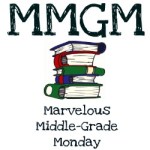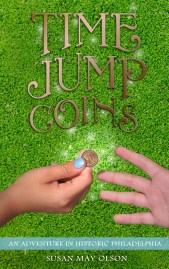 I’ve been working on a post about a time travel book for each of the fifty United States but was lacking one for North Carolina, my current state of residence, so was pleased to find A Girl Called Boy by Belinda Hurmence, (1982, 168 pages). The one-sentence book summary at Goodreads reads, A pampered young African-American girl (Blance Overtha Yancey who goes by the nickname of Boy) finds herself mysteriously transported back in time to the days of slavery. Although I enjoyed reading this novel for many reasons, I am not recommending it because I don’t think the action moves along swiftly enough to hold the average kid’s interest.
I’ve been working on a post about a time travel book for each of the fifty United States but was lacking one for North Carolina, my current state of residence, so was pleased to find A Girl Called Boy by Belinda Hurmence, (1982, 168 pages). The one-sentence book summary at Goodreads reads, A pampered young African-American girl (Blance Overtha Yancey who goes by the nickname of Boy) finds herself mysteriously transported back in time to the days of slavery. Although I enjoyed reading this novel for many reasons, I am not recommending it because I don’t think the action moves along swiftly enough to hold the average kid’s interest.
A Girl Called Boy has been criticized for depicting some slave owners in too benign a light, and also for showing a few characters having some positive feelings toward their masters. It is true that Hurmence depicts some slaves as having mixed feelings toward their masters. However, this depiction may be based on research she did.
owners in too benign a light, and also for showing a few characters having some positive feelings toward their masters. It is true that Hurmence depicts some slaves as having mixed feelings toward their masters. However, this depiction may be based on research she did.
Hurmence apparently did a lot of research as part of her process of writing several books on slavery. She also edited My Folks Don’t Want Me To Talk About Slavery which contains excerpts of oral histories from twenty-one formerly enslaved people living in North Carolina. The oral histories she drew from were collected by the Federal Writers’ Project between 1936-1938, when workers interviewed elderly people who were enslaved before the Civil War. Although Hurmence did not change grammar, she changed some spellings and the order of some sentences  in this book, which makes the excerpts easier to read than the oral histories in North Carolina Slave Narratives: Slave Narratives from the Federal Writers’ Project 1936-1938 which I have also read. She also only used histories from people who would have been ten years or older when freedom came since their memories were probably more accurate.
in this book, which makes the excerpts easier to read than the oral histories in North Carolina Slave Narratives: Slave Narratives from the Federal Writers’ Project 1936-1938 which I have also read. She also only used histories from people who would have been ten years or older when freedom came since their memories were probably more accurate.
In these accounts, which are not appropriate reading for kids, there is a lot of shockingly callous brutality. However, I was also shocked by the positive feelings expressed toward some of the slave owners. There could be several reasons for the lack of negativity. For one thing, most of the interviewers were white and the interviewees may have been trying to tell them what they thought they wanted to hear. Hurmence also notes in her introduction to My Folks,
The reader needs to keep in mind that these oral histories were collected half a century ago, in a time of depression and deep poverty for many whites and most blacks. The entire nation looked backward with nostalgia during the 1930’s. To an aging, destitute black person, bondage may well have seemed less onerous in retrospect, particularly if coupled with memories of an easygoing master, a full stomach, the energy of childhood.
In addition, most things are relative. Some of the interviewees in the book expressed the opinion that their masters were not that bad, in the context of describing how enslaved people at nearby plantations were treated much worse, a perspective which also could explain how some characters in A Girl Called Boy saw their world. My Folks Don’t Want Me To Talk About Slavery and the original slave narratives which exist for many states are tremendously important, for what better way to learn about slavery than from those who lived through it? In my opinion, My Folks is more worthwhile than A Girl Called Boy.
To return to A Girl Called Boy, I liked many things about this book. I appreciated the character of Boy, who is bratty in a believable way at the beginning, but of course matures somewhat through the course of the story. I loved how Boy was plunged into the past when she crossed a creek and how she struggled to make sense of what was going on. Boy’s reflections on the differences between the ways people talked in 1853 vs. present day were moving. The depiction of the food, living quarters, clothing and games of the enslaved people were interesting.
Some aspects of the book were confusing. I was confused about the movement of certain characters who were fleeing plantations. They hid on the outskirts of other plantations for many days. I don’t know if this was typical of people running away. I would have thought they would be in more of a hurry. Having to account for time travelers’ sudden appearance in a new time period is a problem all authors of time travel fiction have to solve. Instead of making the time traveler merely a visitor, some authors have the traveler slip into someone else’s identity, a tricky strategy. I was confused about the way Hurmence had Boy adopt the identity of two different people.
I will try to do a list post of time travel books I know of that deal with slavery. For more middle grade book reviews from a number of bloggers, follow links at Shannon Messenger’s blog.



Interesting. I’ll have to look into the books you mentioned. Incidentally, there are numerous historical accounts of (non-African) slaves or ex-slaves who viewed slavery favorably, in a way completely foreign to our American concept. In civilizations where slavery of your own race was acceptable the whole concept has a different connotation. It was rarely about race or class, but about economics or self-preservation. I’m certainly not condoning slavery or brutality in American history, just trying to shed light on actual historical viewpoints. Thanks for a really thought-provoking review.
Joanne, Very interesting–thanks for sharing that!
I remember when this book came out but never had an opportunity to read it. It sounds like a good one to use in the classroom along with some of the non-fiction titles I’ve read from Nomad Press. Thanks for your enlightening review.
Greg, There may be some better time travel books about slavery. I’m going to try to list the ones I’ve found.
What an interesting review. I like the whole idea of a modern child traveling back in time to experience slavery, despite some of the problems you point out. It’s a fine balance for writers to be authentic to the time period and their research while not alienating modern readers. Maybe there needs to be an author’s note to explain her research to help modern readers understand what she found in her research–if there isn’t one already. Her nonfiction project sounds particularly interesting.
Jenni, yes, I admire writers who can write both fiction and non-fiction.
This book sounds so interesting that, even if it does go slowly, I still have to try it! Thanks for the review!
I think most adults would like it, just not most kids. 🙂
Hmmmm. I am conflicted about this after reading your review. Thanks for all this information.
Rosi, I liked another time travel book about slavery, The Freedom Maze, by Delia Sherman much better, if you haven’t read it.